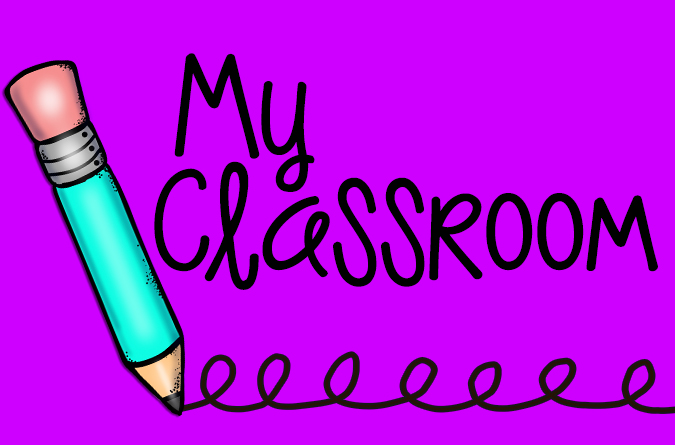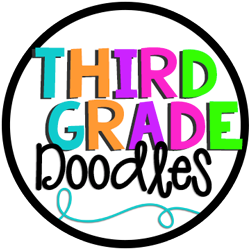Teacher inquiry is something that teachers are always doing throughout their teaching careers. It is also known as action research. We get a "wondering" and we turn our wondering into a question and try something new with our students to answer that question. It is something that all good teachers are constantly doing in their classrooms to improve the learning of their students. I happen to be doing some action research as part of an assignment I am doing for my Galileo Leadership Consortium.
I am exploring "academic vocabulary" as part of my inquiry project. My focus is on math vocabulary, and even more specifically, the vocabulary words associated with fractions. I want to find out the effect that daily, focused vocabulary instruction will have upon my students understanding of the words and their conceptual understanding of fractions. Before I began, I had to determine what "focused vocabulary instruction" would look like in MY classroom with MY students. All of my research led me to Robert Marzano's work with vocabulary instruction. He has developed a systemic approach to introducing new vocabulary that works well with all ages of students. This is the process (in a nutshell):
Students keep their notebooks with them throughout our math period and are welcome to add-on or revise their thinking at any time, as their understanding of the concepts further develop.
Throughout the week, I give students lots of opportunities to discuss and "play" with the words, by asking open-ended, guided-inquiry questions. I have found that through these discussions and activities, the students often have new insights about the words. I choose word and activities that coincide with the lessons that I plan to teach that week.
Here are some worksheets I have prepared to further their thinking about our fraction words. You may download these HERE and HERE. Concept Wheels and Analogy activities are among our favorites!
I have also made a vocabulary word wall, using the free word wall cards from HERE and vocabulary flash cards, which we use for various games (such as Vocabulary Pictionary and Word Sorting). You can download them for free HERE.
Here is a Scoot Game that I created to help students to further explore the idea of "One Whole Unit" and "Fractions Greater Than 1." Download the 24 Cards and Answer Sheet HERE.
I am learning so much about how to teach vocabulary! The students love these activities and are learning so much. I have come to think about the vocabulary words as the "table legs" of our conceptual understanding. The words of "fractions" are the foundation for which students will deepen their learning.....and their learning has deepened!! Students are talking the talk and walking the walk. They use the words in their discussions and in their math work, and they can use the words in a variety of contexts.
This has been such a huge "a-ha" for me that I will begin incorporate these techniques into all areas of our curriculum. I know that you are thinking....when, when, when can I fit this in with everything else that I have to teach???!!! I spend only an additional 15 minutes on these activities...and I don't necessarily do it every day. But I've found that it blends right in with our daily lessons, so its not really "extra time". Also, since this focused vocabulary instruction has given students a strong conceptual understanding, we actually spend less time during our regular lessons dealing with confusions and misunderstandings. Trust me...even if it takes a bit of extra time...it is well worth it. Marzano has been saying it for years....but I had to see for myself!!
I hope you give this a try in your classroom. I will continue to post any new vocabulary activities that I create for my students, so that you can try this too, without reinventing the wheel. I suggest trying this method with just one unit in your math (or other subject) curriculum and then add on a little at a time.
If you are interested in exploring direction instruction of vocabulary instruction, here are some resources that you will find very, very helpful:
Love and peace,

1
I am exploring "academic vocabulary" as part of my inquiry project. My focus is on math vocabulary, and even more specifically, the vocabulary words associated with fractions. I want to find out the effect that daily, focused vocabulary instruction will have upon my students understanding of the words and their conceptual understanding of fractions. Before I began, I had to determine what "focused vocabulary instruction" would look like in MY classroom with MY students. All of my research led me to Robert Marzano's work with vocabulary instruction. He has developed a systemic approach to introducing new vocabulary that works well with all ages of students. This is the process (in a nutshell):
- Introduce the word (brief explanation, including examples and modeling by teacher)
- Students restate the description, explanation, examples in their own words (preferably in a vocabulary notebook)
- Students construct a picture, symbol or other non-linguistic representation (also done in their vocab notebook)
- Engage students in activities that help them to further their understanding of the words
- Students have regular opportunities to discuss the words
- Students play games with the words
Students keep their notebooks with them throughout our math period and are welcome to add-on or revise their thinking at any time, as their understanding of the concepts further develop.
Throughout the week, I give students lots of opportunities to discuss and "play" with the words, by asking open-ended, guided-inquiry questions. I have found that through these discussions and activities, the students often have new insights about the words. I choose word and activities that coincide with the lessons that I plan to teach that week.
Here are some worksheets I have prepared to further their thinking about our fraction words. You may download these HERE and HERE. Concept Wheels and Analogy activities are among our favorites!
I have also made a vocabulary word wall, using the free word wall cards from HERE and vocabulary flash cards, which we use for various games (such as Vocabulary Pictionary and Word Sorting). You can download them for free HERE.
Here is a Scoot Game that I created to help students to further explore the idea of "One Whole Unit" and "Fractions Greater Than 1." Download the 24 Cards and Answer Sheet HERE.
I am learning so much about how to teach vocabulary! The students love these activities and are learning so much. I have come to think about the vocabulary words as the "table legs" of our conceptual understanding. The words of "fractions" are the foundation for which students will deepen their learning.....and their learning has deepened!! Students are talking the talk and walking the walk. They use the words in their discussions and in their math work, and they can use the words in a variety of contexts.
This has been such a huge "a-ha" for me that I will begin incorporate these techniques into all areas of our curriculum. I know that you are thinking....when, when, when can I fit this in with everything else that I have to teach???!!! I spend only an additional 15 minutes on these activities...and I don't necessarily do it every day. But I've found that it blends right in with our daily lessons, so its not really "extra time". Also, since this focused vocabulary instruction has given students a strong conceptual understanding, we actually spend less time during our regular lessons dealing with confusions and misunderstandings. Trust me...even if it takes a bit of extra time...it is well worth it. Marzano has been saying it for years....but I had to see for myself!!
I hope you give this a try in your classroom. I will continue to post any new vocabulary activities that I create for my students, so that you can try this too, without reinventing the wheel. I suggest trying this method with just one unit in your math (or other subject) curriculum and then add on a little at a time.
If you are interested in exploring direction instruction of vocabulary instruction, here are some resources that you will find very, very helpful:
Love and peace,






































